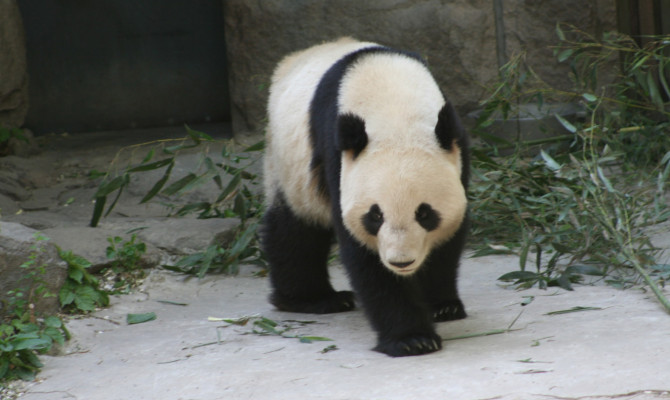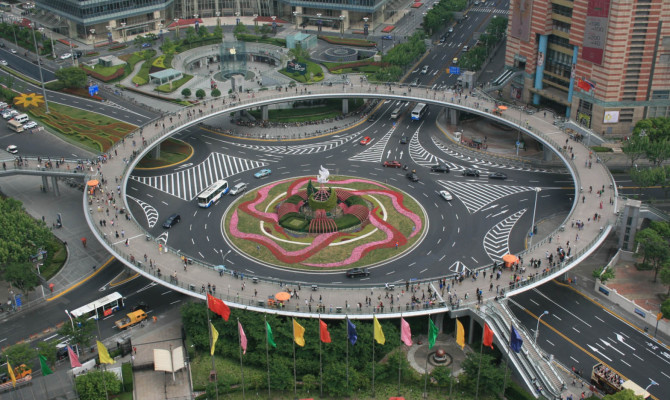The rush period, on a return trip from downtown on the Metro was surprisingly orderly and no different from SkyTrain on a busy hockey night, though far less boisterous…
“Rolex or Mao hat!” was the street hawker’s sales cry, as our rickshaw sped past him through the narrow streets of old Beijing.
It could also be the question posed for an emerging super-nation struggling to blend new-world economics with a communist social order.
Our four-city, 15-day tour of China included many other interesting and modern forms of transportation. To start with, we were very impressed with the cleanliness of airports and train stations. Eating or drinking is not allowed on metro trains in Beijing and Hong Kong and another plus was having important signage in English, as well as Chinese.
China now has more than four billion kilometres of highways and expressways, for road users. Rail travel is inexpensive and popular, and carried more than two billion passengers last year. The high-speed rail line system is expanding rapidly and expected to reach 18,000 km of track by the end of 2015. Shanghai also boasts the world’s first ultra high-speed maglev rail line.
In fact, the only old-world transport during this tour was that rickshaw, which could also be described as a pedi-cab. The only other rickshaws we saw were a few for sale at a closed “for hire” location near a ferry terminal in Hong Kong. The other city we visited was Xi’an, a famous fortress city at the Asian end of the historic “Silk Road”. It’s also the home of Terracotta Warriors, a UNESCO world heritage site.
Cars: China is the largest auto market in the world. More new vehicles are sold in China every year than in all of North America. While it has about a dozen major home auto manufacturers, most have production agreements with foreign auto makers.
Which explains why, for the most part, you’ll see the same Volkswagens, Buicks, Hondas and Toyotas that you’ll find on any street in Vancouver. How they’re driven is different. Many drivers ignore crosswalk rules, so it’s advisable to cross busy intersections with a group of fellow pedestrians, there’s safety in numbers!
Our in-car experiences were mostly taxis and all were Toyota Crown models. In fact, in all four cities, it seemed like every taxi was a red and white Toyota … even in Hong Kong where they drive on the left side of the road, a British legacy. One memorable drive was a speedy, wild taxi ride to the Airport in Shanghai, a “kiss the ground” on arrival experience. Should have taken the train.
Trains: Out first train experience was in the Beijing Metro system and it’s the fastest way of getting downtown. Even though there are vehicle restrictions that only allow odd and even license plates on alternative days, traffic congestion is a problem.
Beijing has the second longest subway system (in terms of track length) in the world (after Shanghai), but its average weekday ridership is over 10 million. During our week in the city, it actually recorded a world one-day ridership record of 11.24 million. By comparison, the weekday ridership on the SkyTrain system in Metro Vancouver is less than 400,000.
It’s certainly a good idea to plan a Beijing metro trip in advance, but we found it surprisingly easy to navigate. The rush period, on a return trip from downtown on the Metro was surprisingly orderly and no different from Skytrain on a busy hockey night, though far less boisterous.
We made an early morning start in Beijing to catch a bullet train to Xi’an. This 1,144-kilometre trip use to take more than 11 hours, but a high-speed (over 300 km/hour) train can do it in less than five. Impressively smooth, relatively quiet and comfortable, it’s a relaxed mode of travel and you can move around as much as you want. You don’t fully appreciate the high rate of movement until another bullet train passes in the opposite direction – there’s a sudden blur, whoosh and it’s gone!
Maglev looks like a traditional train until you realize it uses magnetic levitation – no wheels! Powerful magnets provide both lift and forward thrust and it can reach speeds of more than 400 km/hour. Unlike friction-based (wheeled) rail, it’s unaffected by snow, ice or rain.
The ride is also more cushioned ride than the bullet train. The track, which is about 30 km long, had banked corners and the trip took about ten minutes.
Last but certainly not least: A truly unique and relatively new transportation structure in Shanghai is the Pearl Loop Pathway. Above a massive roundabout in the heart of the financial district, this wide elevated circular pedestrian pathway has street-level escalators and connections to business towers and tourist attractions, including Shanghai’s famous Oriental Pearl Tower.
A transforming giant with a rich history, China never ceased to amaze.
Recent Comments
- { Enjoyed your Forest of Bowland in the BMW X5M, particularly the photo of the BMW in front of the main part of Stonyhurst College where... }
- { Bantam designed the Jeep, not Willy's or Ford. The American military gave the original Bantam prototype to Willys and Ford to copy. There is plenty... }
- { All Escalades come with a 6.2-lilter V8 engine that produces 420 horsepower. A six-speed automatic is the only transmission offered and drives the rear wheels.... }
- { Alexandra is an excellent journalist. }
Popular Posts
- Journey to a ‘Sparkling’ Luxury Okanagan Resort “Four lucky readers will put a Dodge Journey’s weekend-...
- The Need For Speed: Hike Those Highway Limits More than half of those polled believe the province sho...
- Drives-U-Crazy… Erratic drivers. An early morning drive from Kelowna to Vancouver is nor...
- Readers Respond: The Pros and Cons of Increasing B.C. Speed Limits Increasing the speed limits will only increase risk to...
- Honda CR-V Review: The Compact Crossover To Get Things Done The CRV is a very stylish and aerodynamic crossover veh...















